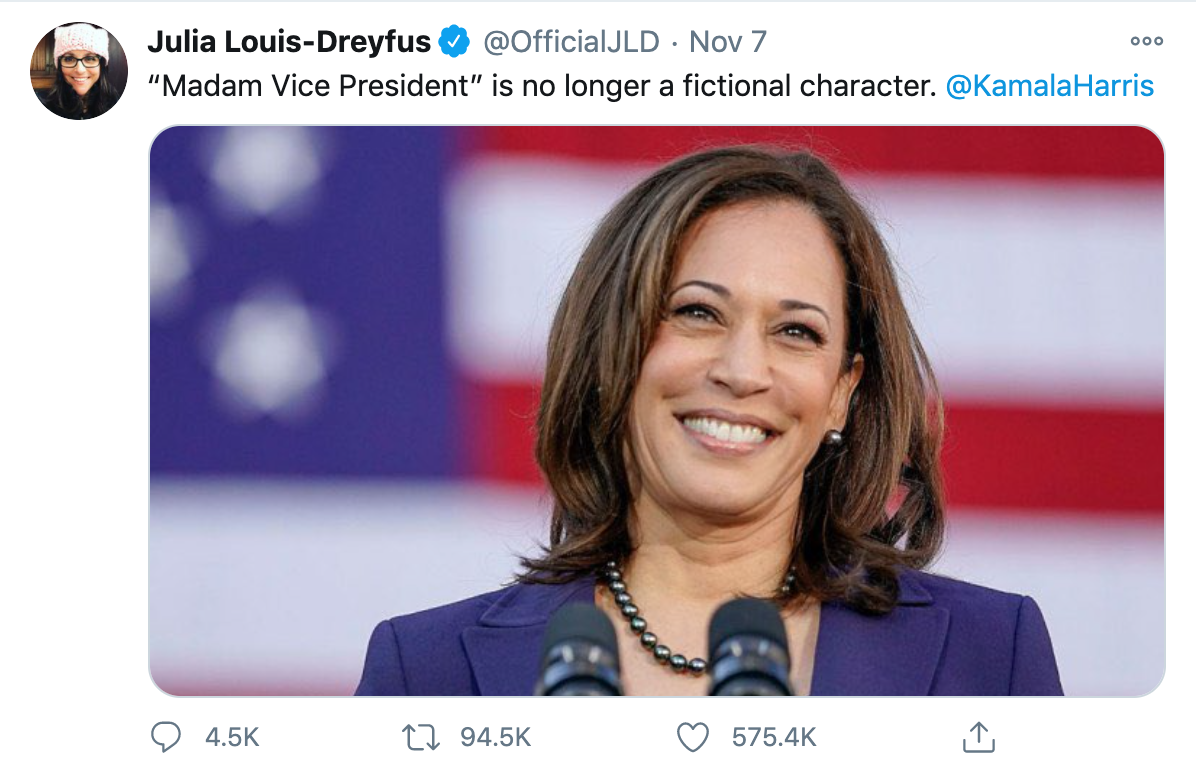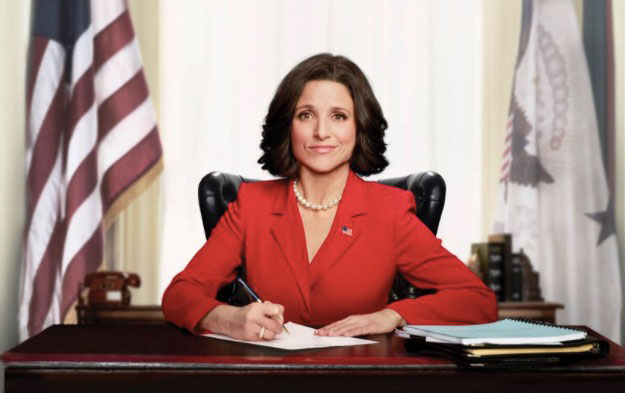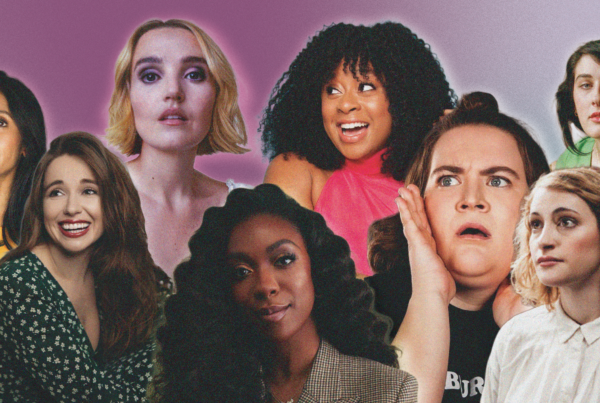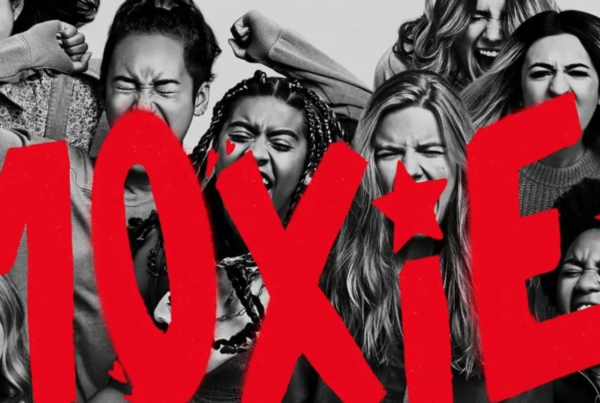Entertainment Manifesting Reality?: “Veep” Edition
The concept of HBO’s Emmy-winning comedy Veep is simple: make fun of politics and everything that comes with it. It’s seven seasons of eccentric, power-hungry, often underqualified characters performing the tasks and initiatives that the female vice president of the United States, Selina Meyer, as played by Julia Louis-Dreyfus, needs accomplished behind closed doors.
But, the biggest joke? A woman as VPOTUS. Not that a woman in the highest or second high office is a joke, but the fact it’s hilarious it was still fiction. It’s true, during Veep‘s lifespan there was a real possibility for a woman president, but, obviously, that never happened.
Now, 244 years after the birth of this nation and one year after the series finale of Veep aired, it’s no longer just fiction–the nation will soon have a woman VP. Enter: Vice President-elect Kamala Harris. Damn, does it feel good to say that.
When now President-elect Joe Biden first announced he would select a woman as his running-mate, I was thrilled. Something along the lines of “thank God” were the first words that popped into my head.
Harris is just the fourth woman to be on a presidential ticket in one of the two major parties. Before her came Geraldine Ferraro, as Walter Mondale’s running mate in 1984, and Sarah Palin, as John McCain’s in 2008—both losing terribly to their opponents. After that, of course, came Hillary Clinton as the Democratic Party’s presidential nominee in 2016, with a narrow electoral loss to Donald Trump.
But, in all the races in between, they are the only women featured on the ballot of arguably the highest office in the world. So, what gives? The three women that have come before Harris on a presidential ticket were seen as risky moves and lost their respective races due to a number of reasons. But this time around, for Biden, a qualified woman running mate was seen as one of the key things he needed in order to ultimately win the presidency.
What changed? It’s fair to say a number of things have progressed from 1984, 2008, and even 2016. Hindsight is 20/20, particularly from four years ago, and it’s far easier to see now that many challenges that Hillary Clinton faced were blatantly misogynistic, both in the media and in the eyes of the American voters. That, mixed with civil unrest, attacks on women’s rights to her own body, and electing an alleged sexual predator to the Supreme Court, it seems more clear than ever that a woman’s voice is needed inside the White House.
Beyond these reasons, there’s another many may not acknowledge: the way in which entertainment influences reality. This might sound farfetched, but hear me out when I say: the show Veep may have helped influence a REAL woman Veep.
Although Veep is satire, and main character VP Selina Meyer is said to be a misogynist by Showrunner David Mandel and is in it for the hilariously wrong reasons, it’s impactful to see a woman in the White House. Representation in the media is a hot button issue as studios begin to prioritize diverse casts due to consumer and cultural demand for them, and this situation is no different. If you can see a woman as Vice President on TV, even if fictional, it aids the mind to envision an actual woman in the White House.
You see Selina grapple with things like the #MeToo movement, a senator “grabbing her ass,” male colleagues not taking her seriously, when to be more feminine or appear more masculine. And while the comedy often comes from how poorly she handles situations, or her lack of a conscience, it does bring to light the kinds of things women in politics are burdened with, yet are able to rise above, all in the mode of easy TV-viewing.
And this show didn’t run under the radar, either. It aired on HBO, a network known for high quality television content. During its seven-year reign, it won 17 Emmys, including three for Outstanding Comedy Series. If you didn’t watch it, you knew what it was—something very few shows can claim in this golden age of television.
And while I think all of us hope Kamala Harris isn’t too much like Selina Meyer (especially behind the scenes), I think we owe some form of thanks to this fictional character. Americans saw a woman VP, and they could laugh while confronting how bizarre and backwards it is that we’ve never come close to having one. Representation in media and entertainment influences our reality—even in highly specific cases like this one.
So, cheers to our first woman Vice President of the United States. There’s lots of ways she got there, but we’re just glad she finally did. She is the first, and may she not be the last.


-Ann Vrooman, Content Director






